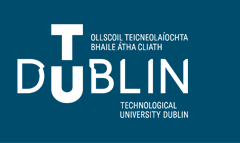Document Type
Report
Disciplines
2. ENGINEERING AND TECHNOLOGY, 2.1 CIVIL ENGINEERING, 2.3 MECHANICAL ENGINEERING, 2.7 ENVIRONMENTAL ENGINEERING
Abstract
The Built Environment is one of the main contributors to global resource consumption, waste generation and greenhouse gas (GHG) emissions, exacerbating environmental degradation and climate change (MacArthur Foundation, 2022). Circular Economy and sustainability concepts have emerged as promising strategies to address those challenges (EUR-Lex, 2015; European Commission, 2019). The Circular Economy aims to minimise waste and resource depletion, while sustainability emphasises on meeting the current and future needs of society with minimal environmental impact (Pomponi and Moncaster 2017a; Çetin et al. 2021; MacArthur Foundation 2022). The digital transition, facilitated by technological advancements, can accelerate the adoption of Circular Economy principles (S Çetin et al., 2022). Hence, Digital Tools can enhance resource management, waste reduction, and promote material reuse in the Built Environment (Akinade et al. 2017; Oluleye et al. 2023). One of those Digital Tools is the Material Passports which have a crucial role in promoting circularity and resource efficiency in the AEC industry (Kovacic et al., 2020). Despite their potential, there are some significant challenges. The major challenge is that the current Material Passports are static and require significant manual input. However, there are still gaps and challenges in implementing Material Passports in construction projects that need to be addressed. For example, Honic et al. (2019b) identified challenges related to data quality control, stakeholder involvement, as well as real-time updates and interoperability between different systems as key barriers to wider adoption of Material Passports. Therefore, this literature review report embarks on a comprehensive exploration using a mixed qualitative methodology, blending the methods of critical review of literature (Creswell, 2009; Williams, 2007) to contact an initial horizon scan for digital technologies that can enable a circular built environment, while the systematic review (Creswell, 2009; Williams, 2007) was used to refine papers for Material Passports and identify the gaps of their current stated. Based on the gap analysis a proposed framework for Dynamic Material Passports will be proposed for future research.
DOI
https://doi.org/10.1108/BEPAM-02-2020-0027
Recommended Citation
Markou, Ioannis; Sinnott, Derek; and Thomas, Ken, "Material Passports – Challenges, Opportunities, and Future Directions" (2024). Reports. 7.
https://arrow.tudublin.ie/builddigitalrep/7
Funder
Department of Public Expenditure, NDP Delivery and Reform
Creative Commons License

This work is licensed under a Creative Commons Attribution-NonCommercial-Share Alike 4.0 International License.



Publication Details
https://www.emerald.com/insight/content/doi/10.1108/bepam-02-2020-0027/full/html#:~:text=The%20MP%20model%20was%20proposed,the%20development%20of%20this%20tool.
doi:10.1108/BEPAM-02-2020-0027